Remember back in the Bathroom project it started out with "So, a number of you have asked what the goal is, so I added this page Well... two fold. First is that there was a water leak somewhere and all I knew was it was in the shower area." Well I have also been dealing with a number of other leaks in the house. The two big ones are in the kitchen and in the corner bedroom. Both are the blatant fault of my arch nemesis, Andy Gale (aka, Dandy Andy) from whom I bought this house, and whom has no sense of pride in his work. The other have been "fixed" over the years and are primarily based on rotting flashing (which Dandy Andy did not replace (or hence properly weave back into the shingles) so around fireplaces and valleys on the dormers I have had a yearly tradition of going up on the roof to do PM work. Most of the time successful. Andy was all about getting it done cheap and quick and I doubt he has any real concern about quality. Get it done cheap and let the next guy worry about it.
Since the roof is only about 15 years old, I should be able to get a number of more years out of it. But this year, as I went up to do my preventative maintenance, to keep the two leaks from doing more damage is saw something far worse. a 5' x 15' section of roofing had slid 6" down the roof. Close inspection of the section showed that Andy had nailed the roofing material about inch from the edge of the shingle—not the recommended 5 7/8". So the second reason for this job, perfectly good shingles installed improperly.
I have had one other run ins with this back in 1999 when a large triangle of my roofing blew off in a winter storm. I happened to be in Singapore at the time and Tammi had a roofer repair it. He mentioned that the shingles were nailed too high, but I had no idea he meant on the edge!
 |
.jpg)
|
|
Aerial |
Indicating areas of damage Black: 1999; Red: 2008 |
The aerial shots of the house show both of these spots. Using the marked up version (the black triangle) you can easily the color change in the roofing that was replaced in the winter of 1999. The red triangle marks the spot of the new damage. The first damage was caused by wind. Strong storm winds come from the east (right) and there was a good gust the day that section left. But the new damage is not only on the leeward side of the house, but somewhat shielded by our neighbors to the west and up hill from us. How this huge section came loose is a bit of a puzzle, except the poor nailing job.
Of the other issues I have with the roof is Dandy did not replace the original flashing—it would have been 20-25 years old when he put on the new roof. To boot the flashing he put down on the new section of the house he pieced. No problem for a section of 12:4 pitch, but not for a section of 21:1 pitch—with a seam right above my oven in the kitchen. That leaked the first year I was in the house and I have been keeping that in check every year after. This is not fixable without replacing the roofing and the flashing. The first year the damage was significant in the house and required a section of the ceiling in the kitchen be replaced. It looks like I will need to do that again this year,

|
So how big a job is this? My worksheet is to the left. About 34 squares (or, 148 bundles, or 5.3 tons) of asphalt shingles, 250 feet of ridge, 200 feet of valley, 18 rolls of 30# felt, countless nails (maybe 11,000), tar and, I am sure a few sheets of plywood to replace damaged underlayment.
The numbers and letters correspond to the dimensions for the calculations and the double number/letter (i.e. 39b 5F) mean the number of bundles and rolls of felt for stacking on the rooftop delivery.
Oh yes. I am sure I will consume a gallon of gin, 4 gallons of tonic, 6 limes and apply a quart of sun screen.
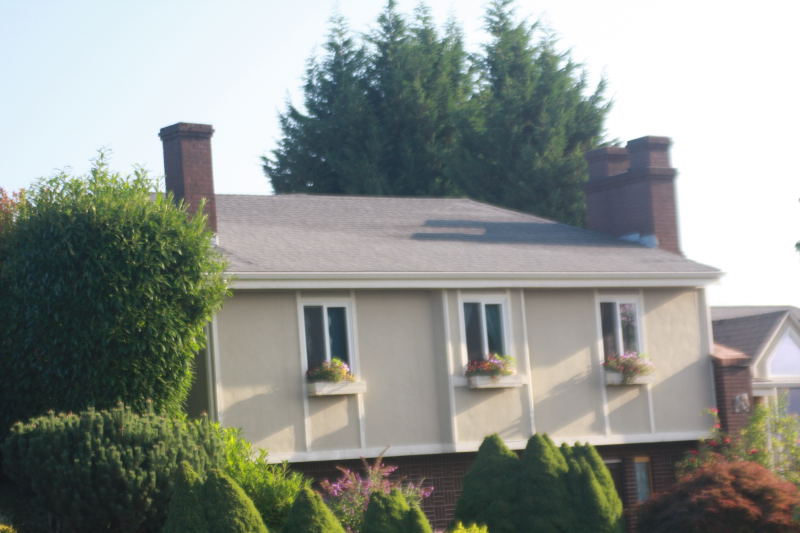
1999 repair (the lighter colored shingles) visible from street.
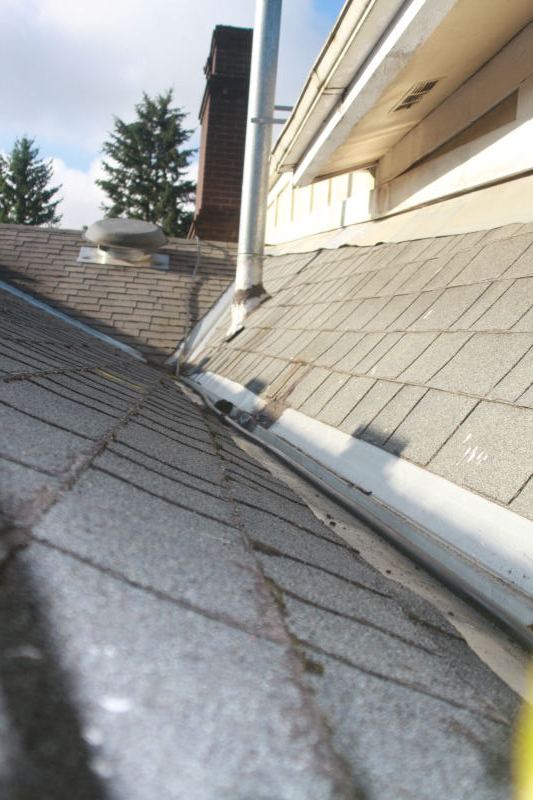
The 21:1 pitch and seam. During demolition I could see the Dandy Andy overlapped these sheets an entire TWO INCHES! effectively a flat seem. Idiot.
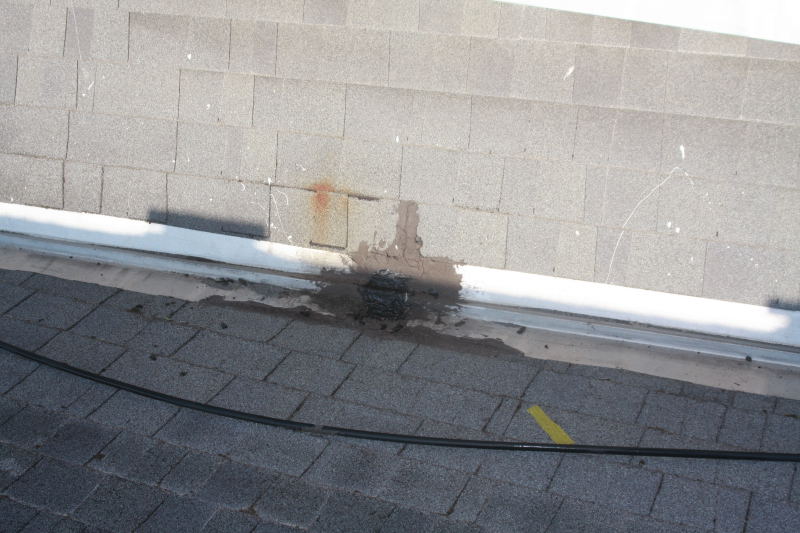
The repaired seam.
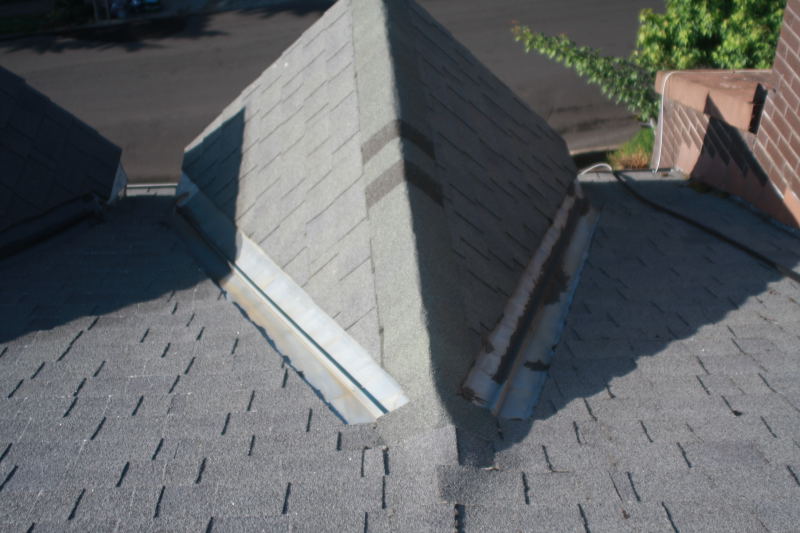
Dormer flashing repair.
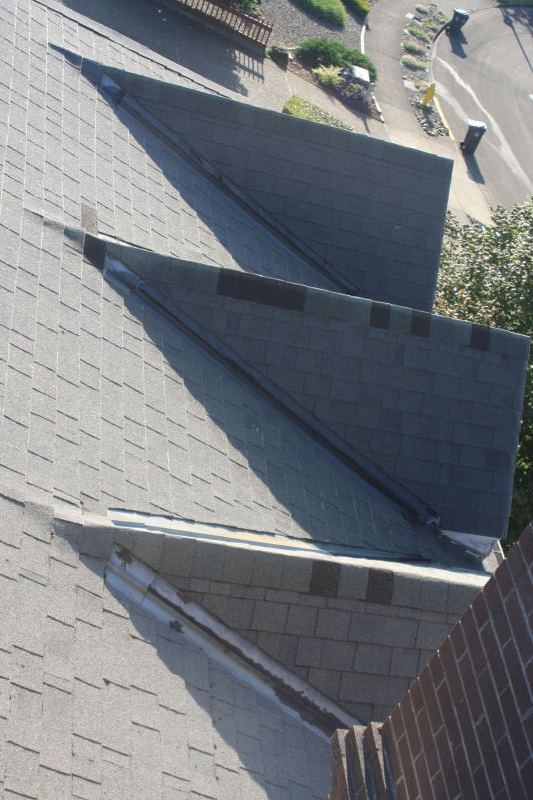
Dormer flashing repair.
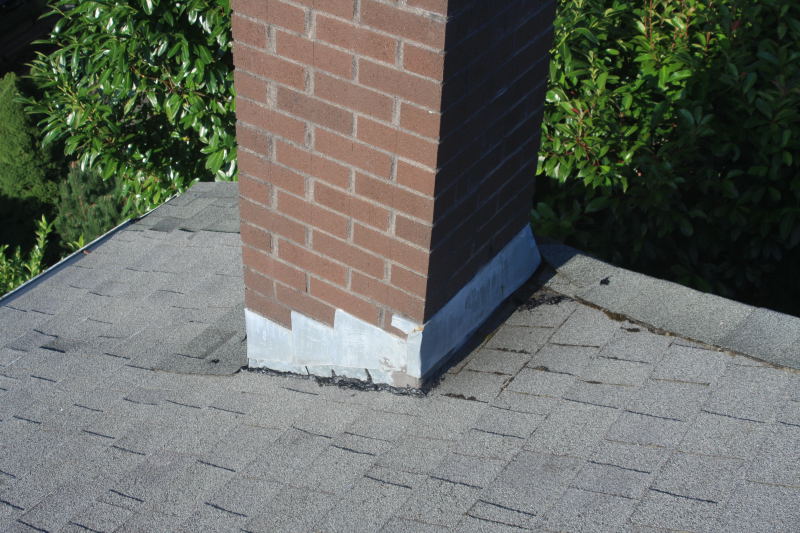
Garrett's roof leak repair.
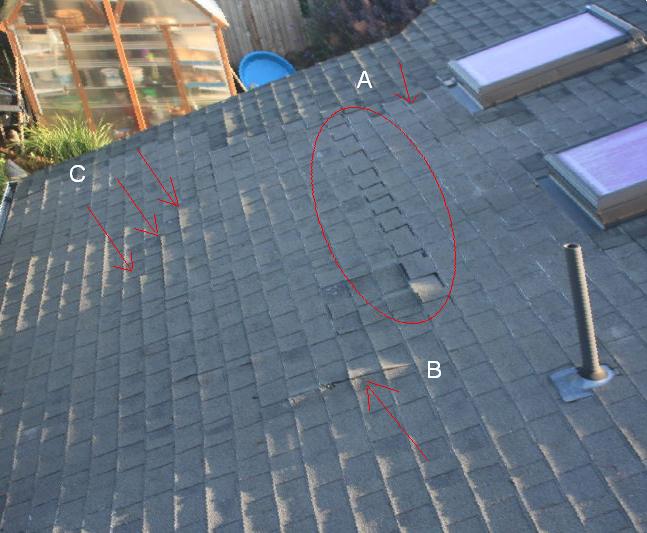
Roofing slippage after repair (you may need to look at the larger view by clicking on the picture)
A: Exposed underlying shingles the are delaminated.
B: Buckling, from where shingles slid
C: Difference in rows (after temporary repair)
Prior to the temporary repair, the section had slid down about 7-8 inches. Three of us pulled the section up and I nailed it on the top row under the un moved singles. Close inspection shows that this trend is all over this section of the roof. For instance, the oval shows the main slip, but the arrow right next to it shows the secondary slippage.